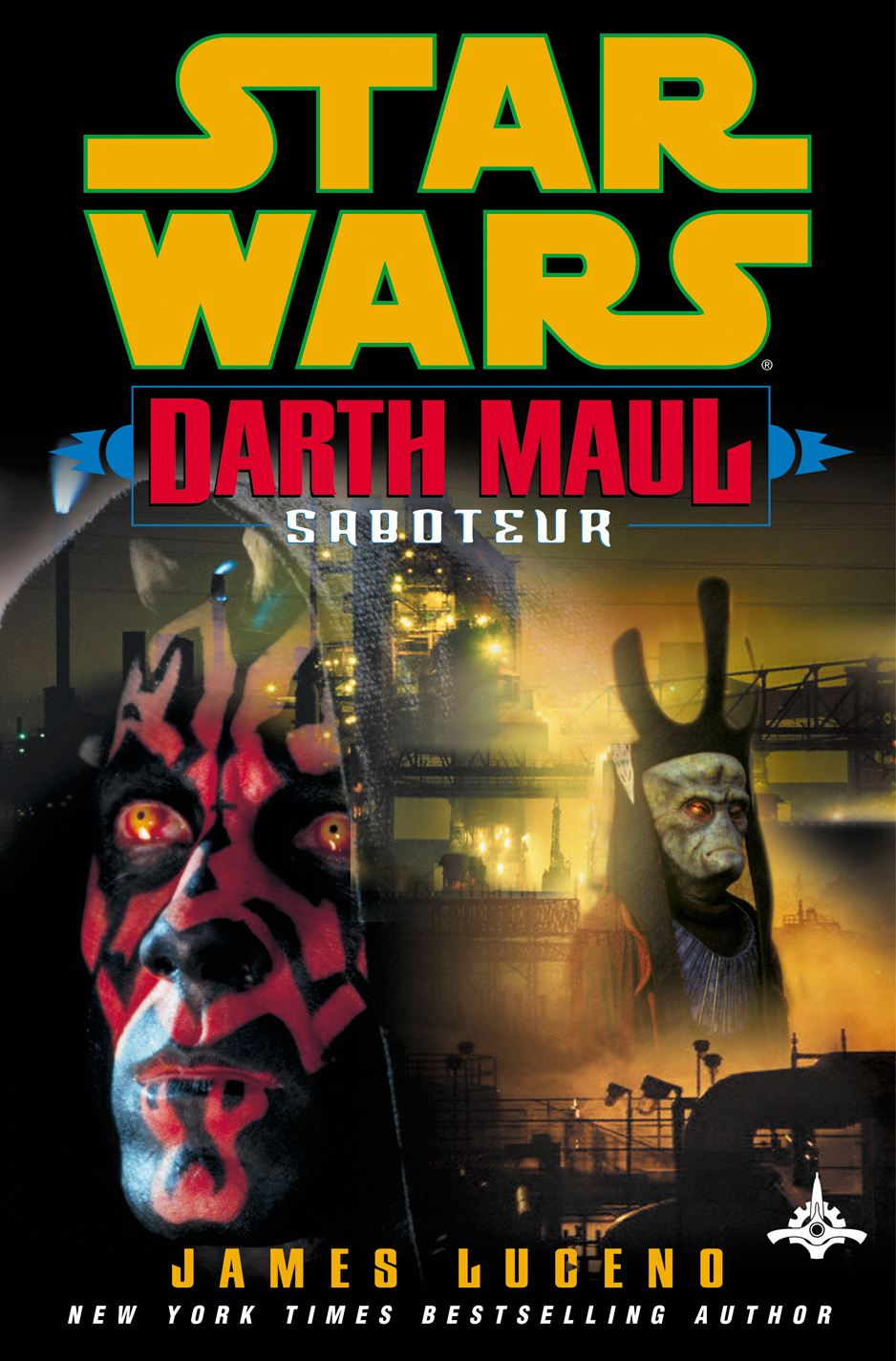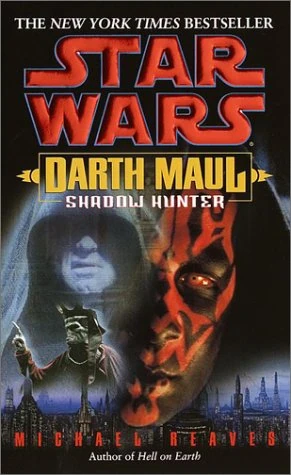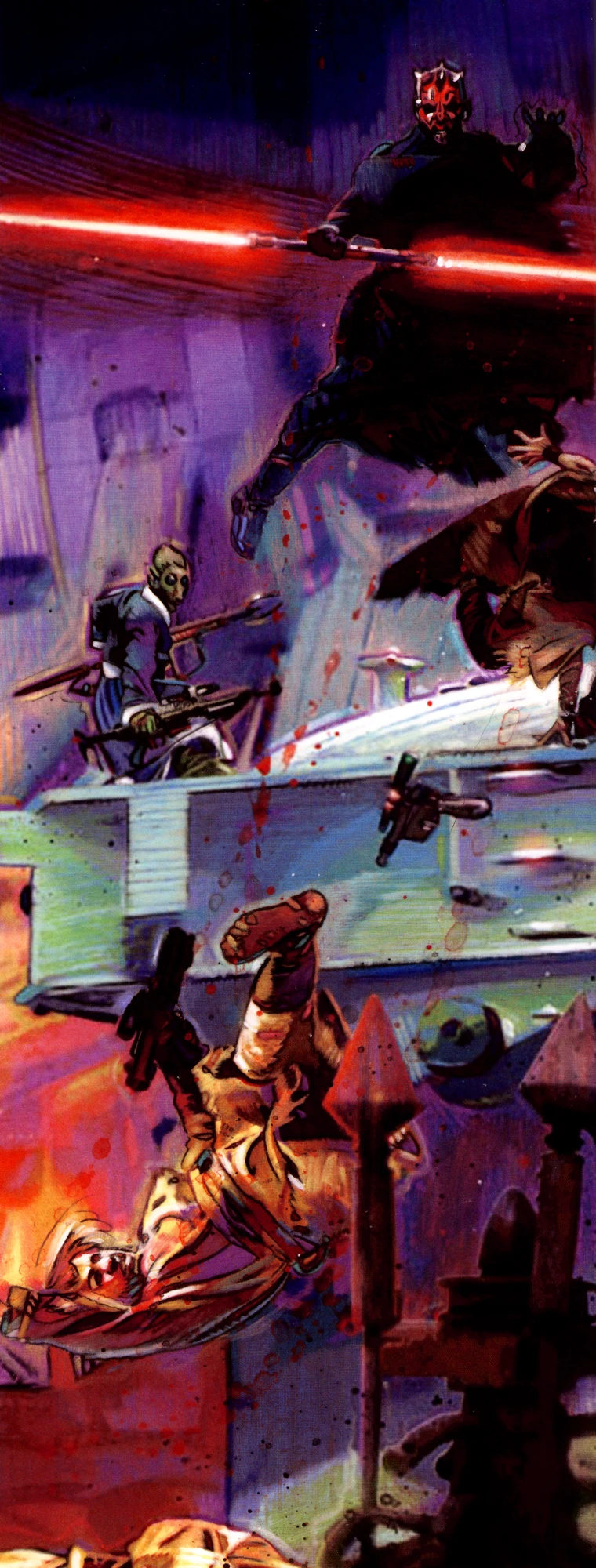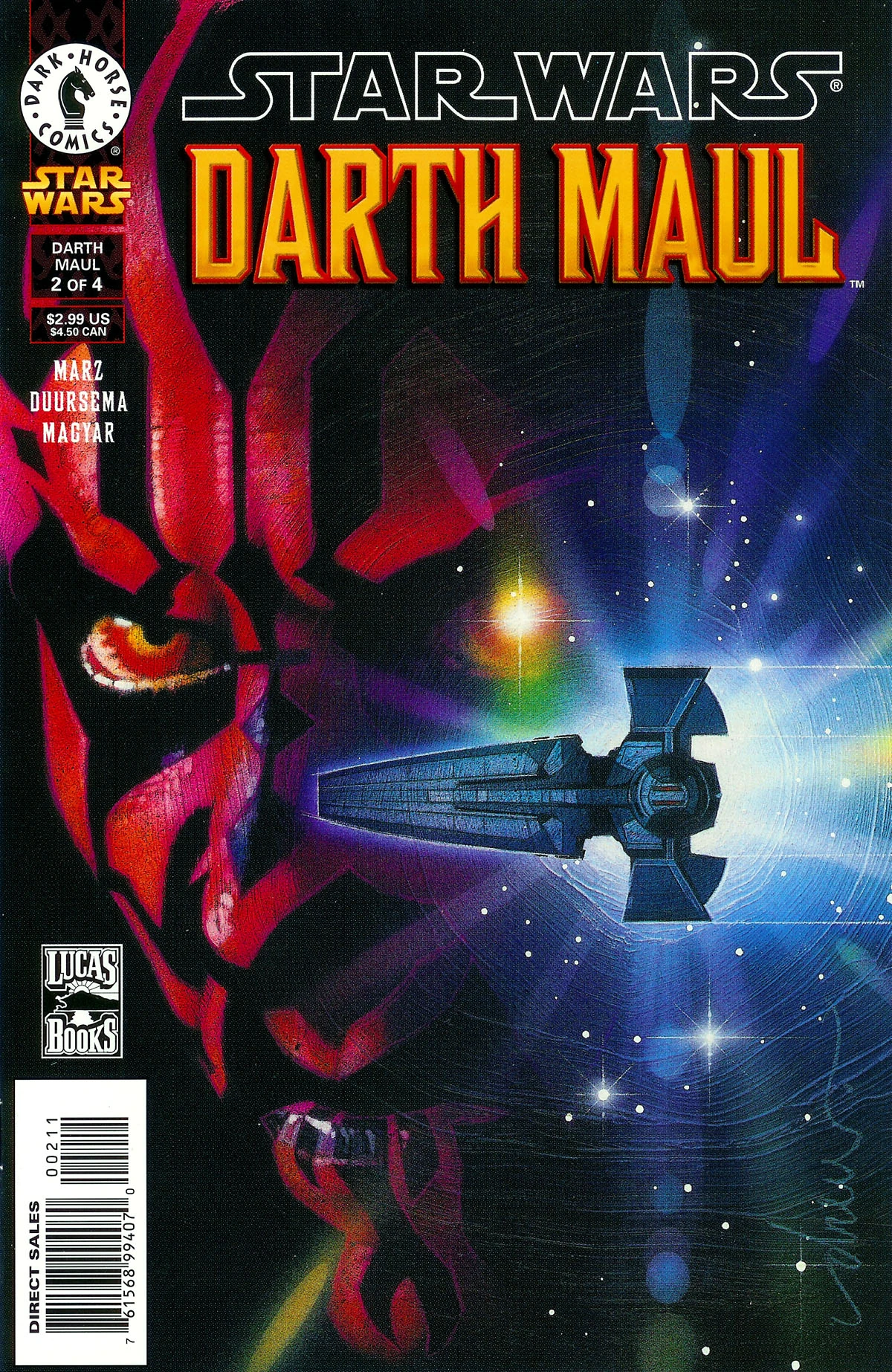into three parts, the first two thematic and the third a bit arbitrary. I've already covered all stories pertaining to Qui-Gon Jinn and Obi-Wan Kenobi. For this, my second post, I will cover Darth Maul. Specifically:
.
Story:
These stories centre around the life of Darth Maul as he trains as the apprentice of the Sith Lord Darth Sidious. He hones not only his combat and survival skills, but also his cunning and his link with the Dark Side of the Force.
In
Restraint, Maul is training with a group of mercenaries, when a team of Nightsisters from Dathomir attempt to capture him and bring him home as a slave. A separate group of mercenaries intervene, and Maul must fight off the Nightsisters and the mercenaries, all while believing this attack to be a test from Lord Sidious.
 |
| Cover of Darth Maul: Saboteur in its original ebook format. Image from Wookieepedia. |
In
Darth Maul: Saboteur, Maul is tasked with disrupting a pair of mining companies, so they must merge and begin a relationship with the Trade Federation. He does so using cunning and guile rather than his martial prowess.
In
Maul: Lockdown, Maul infiltrates a prison under the guise of a mercenary and assassin. His goal is to find an arms dealer that operates within the prison, but he must also survive the gladiator arena, where prisoners fight to the death for the amusement -- and profit -- of the gamblers who watch.
In the
Darth Maul comic miniseries, Maul is tasked with hunting down the leaders of the Black Sun criminal syndicate. He is given his trademark Sith Infiltrator spaceship, which we see him with in Episode I. He eliminates the syndicate, limiting their ability to threaten Darth Sidious's master plan.
In
Darth Maul: Shadow Hunter, Maul is tasked with hunting Hath Monchar, the deputy viceroy of the Trade Federation, who is hiding on Coruscant and hoping to sell out his Sith masters. Along the way he comes across more Black Sun operatives, a bounty hunter, a pair of information brokers, and for the first time he is able to test his mettle against Jedi Knights.
 |
| Cover of Darth Maul: Shadow Hunter. Image from Wookieepedia. |
End Game told the story of what happened to Darth Maul whenever he wasn't on screen during
Episode I. He reflects upon his short duel with Qui-Gon Jinn on Tatooine, searches for the Gungan underwater cities, and helps the Trade Federation deploy their forces against the Naboo.
Thoughts:
My feelings on Darth Maul echo my feelings of some other secondary villains in Star Wars. The movie series' primary villains (Darth Vader, Emperor Palpatine/Darth Sidious, Kylo Ren) are very well developed and fascinating characters. Secondary villains like Darth Maul, Boba Fett, or Captain Phasma have a tendency of being hyped in promotional material as badasses that will delight and amaze, but who ultimately have little to do onscreen, leaving us disappointed. However, these characters shine in other media, like novels and comics, where budgets, special effects, acting, and available screen time are irrelevant. In
Episode I, Maul gave us an amazing lightsaber duel (the best one until
Revenge of the Sith or
The Last Jedi), but as a character he seemed like little more than his master's tool. But in these stories, he was a vicious yet careful and cunning hunter; a real threat to the Jedi. Like those other examples I gave, he flourished on the page when he could not on the big screen.
 |
| Darth Maul destroys the Black Sun crime syndicate, as depicted in the Darth Maul comic miniseries. Image is from The New Essential Chronology and downloaded from Wookieepedia. |
As I had previously noted, I am of the view that anything related to the
Star Wars: The Clone Wars cartoon series should be removed from Legends continuity and only be part of the New Canon. This is not a criticism of those works; I really enjoyed
The Clone Wars. But the stories fit better in their original, pre-TV show configuration.
Restraint links Maul with the Nightsisters and their slave Nightbrothers on Dathomir, while
End Game also references Maul's apparent survival in
Episode I. These were fun stories, but better off removed from Legends.
I have similar feelings about the references to Darth Plagueis in
Maul: Lockdown and
End Game, but I will go further into that in my next post, when I cover the
Darth Plagueis novel.
Speaking of
Maul: Lockdown, it was fantastic. While we did not get to see much from Maul in the way of lightsaber combat or Force skills, the story was fascinating and the combat gruesome. The various plots that all come together in the end, involving Darth Sidious, Darth Plagueis, the gambling community, the banks, a hidden arms dealer, a death cult, and Jabba the Hutt made for a wonderful adventure. I may need to investigate some of Joe Schreiber's non-Star Wars works.
 |
| Cover of Maul: Lockdown. Image from Wookieepedia. |
I had not previously realized that
Darth Maul: Saboteur was a direct prequel to
Cloak of Deception. It was interesting to read how Maul was responsible for setting up the status quo of the planet Dorvalla (one planet-wide mining company selling exclusively to the Trade Federation) before that previously-read story could begin (Trade Federation ships over Dorvalla being attacked by pirates). Indeed, many of these stories are interconnected. For example, the Neimoidian Hath Monchar, whom Maul must kill in
Shadow Hunter, is shown trying to defect to the Black Sun crime syndicate in the
Darth Maul comic.
The
Darth Maul comic was an action-packed adventure, and was the first time (in my chronological read-through) that I got to see Maul actually fight with his lightsaber. In the earlier stories, he was under instructions not to use his trademark blade. As the only story with a visual aspect I read for this post, it was great to actually see Maul cut loose and fight the way he was meant to.
 |
| Cover of Darth Maul #2. Image from Wookieepedia. |
End Game surprised me as a really interesting look into Maul's and activities during
The Phantom Menace. It let us know that he was active on Naboo prior to the Jedi's arrival, and that he planned how his duel with them would go. It was also filled with a number of other Star Wars Legends references that I haven't consumed (yet, in some cases), such as the Trade Federation campaign in the game
Galactic Battlegrounds or the
Episode I Journal: Darth Maul young reader book.
Overall, these stories reinforced that Maul was a great villain that was sadly underused in
Episode I. I was glad I could experience his story more fully. I've not yet read the New Canon
Darth Maul comic miniseries, but I can only hope it's as fun as these Legends stories.
Next:
This was Part 2 of my three-part coverage of
Episode I prologue material. Next will be the remaining stories that lead into
The Phantom Menace, including the
Darth Plagueis novel, the
Starfighter video game, and some comics.






Comments
Post a Comment